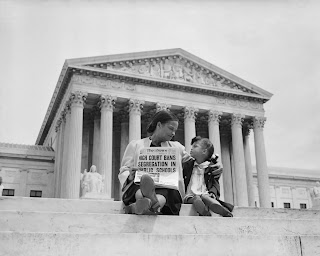Many of the presentations that I listened to on the acts that were placed due to a group of people, abolitionists, who all strived to end slavery made strong attempts to put an end to slavery. There were still many people at the time, who despite the abolitionists efforts, could not handle the idea of slavery coming to an end. Based on the two opposing sides, I really got to understand how passionate each side was for addressing their strong beliefs.
Some of the acts of pro slavery that I learned about and found interesting were the fugitive slave act, bleeding Kansas, the Nullification crisis, the Succession of South Carolina, and the Battle of Fort Sumner. Based off of what I learned about these acts, they seem like they would do a good job on maintaining the protection of slavery, but not a good job at doing so in a peaceful way.
Some of these acts did have downfalls due to the efforts by the abolitionists. Bleeding Kansas is an example of this. Because of this act, the country saw a divide in the whole country and a few well-known abolitionists, including John Adams and Frederick Douglass got involved to fix this divide in our country. John Brown was so desperate, he believed the best way to get his point across was through violence in a "Holy war" and believed he was killing for a cause. This movement was not a success as it did not only contain a political issue, but a moral one.

The Succession of South Carolina was the pro slavery side's last stand to keep the slaves as they are. It caused another war for the slave's way of life and was a very large pivot point of the American Civil War because it was a major step towards revolution.
One of the more major initiatives taken for the pro-slavery side was the Battle of Fort Sumner. It started on April 11 and took thirty two hours. During the duration of this time, there were many casualties and all the soldiers were low on ammunition. This entire event shocked the North.

Reflecting on these acts that were placed due to the endeavors of the pro-slavery group, it gives a sense to not only how badly they wanted to remain in a state of how they originally were, but also the procedures taken were out of violence and caused chaos and severance from the other half of the country. Those are not signs of accurate ways to propagate their desires.
The abolitionists, or against slavery side, responded to these by enforcing some events for their own cause. These included the underground railroad, newspapers, the Amistad Case, the American Anti-Slavery Society, and slavery rebellions.
Some positives to the underground railroad is that it was non physical. They were routes made to help enslaved people escape from their owners, to the North or to Canada. These railroads were neither a railroad or underground either, so it took a lot of bravery and sacrifice to use these networks. The same repetition of the names of people fighting back against slavery is seen in the making of the underground railroad when I discovered that Douglass, as well as Tubman and Still were active supporters of this. All of these elements that went into the production of the underground railroad symbolize resistance.
Some of the newspapers at that time in support of abolishing slavery were the Liberator and The North Star, which were in favor of the acts and cases that helped the effort to end slavery.
Although many of the anti-slavery acts and performances were peaceful and did not cause much ruckus, there still were some that caused disputes, such as the American Anti-Slavery Society. Although this was the first group of its kind, a lot of people were against, which caused disagreements.
Another example of an event becoming a wrangle for the United States is the rebellions, one of the most important being the Nat Turner Rebellion. This was such a significant event because of everything that came as a result of it such as wide spread hysteria and the white mobs that swept through. Turner believed it was his calling from God to lead this devastating rebellion, which lasted fir two days and two nights. Another result of this was the public hanging of Turner after being in hiding for two months.
Some more of these ruinous rebellions included the Haitian Revolution and the Trans Atlantic.




No comments:
Post a Comment